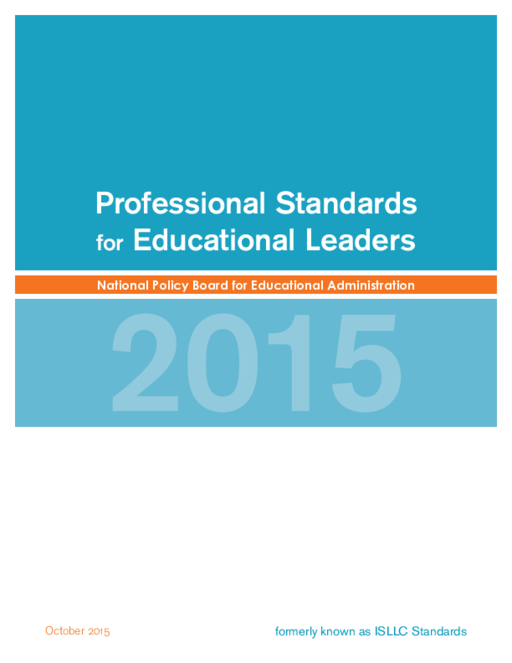Breadcrumb
- Wallace
- Reports
- Professional Standards For Educa...
Professional Standards for Educational Leaders 2015

Overview
More
Less
- Publisher(s)
- National Policy Board for Educational Administration
Summary
This document updates a set of voluntary school leadership standards first developed in 1996, then revised in 2008 and long known by the initials of the creator of the original document, ISLLC. The 2015 document, which omits the ISLLC reference, differs from its predecessors by focusing more strongly and clearly on students and student learning. The publication lists and describes 10 standards—up from six in the 2008 version—for principals, assistant principals and others. The standards range from the ability to “develop, advocate and enact” a mission, vision and core values for a school to the ability to “act as [an agent] of continuous improvement to promote each student’s academic success and well-being.” The 2015 standards are the work of the Council of Chief State School Officers and a consortium of scholarly and education professionals’ organizations in the National Policy Board for Educational Administration. The standards-revision project, which was supported by Wallace, reflects more than a year of work, including two public comment periods and a synthesis of feedback from more than 1,000 principals and superintendents.

